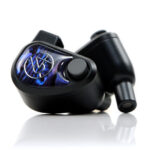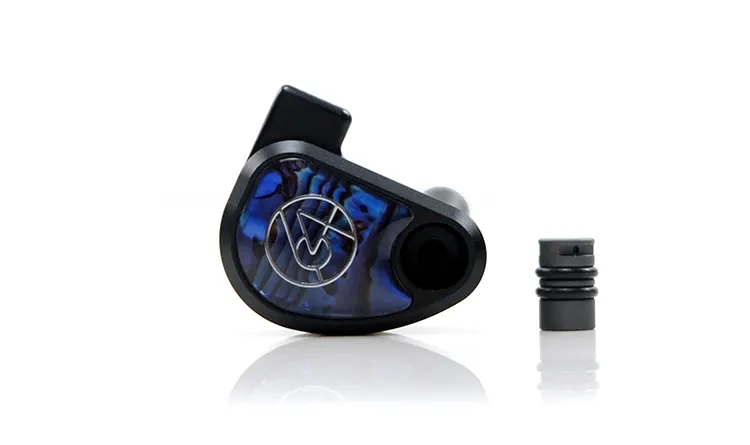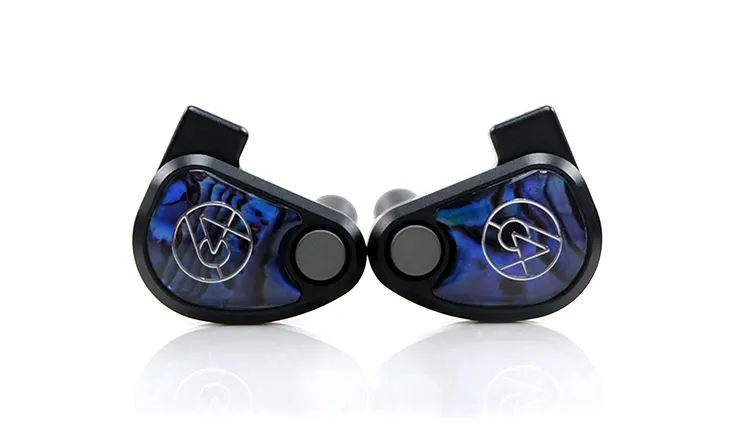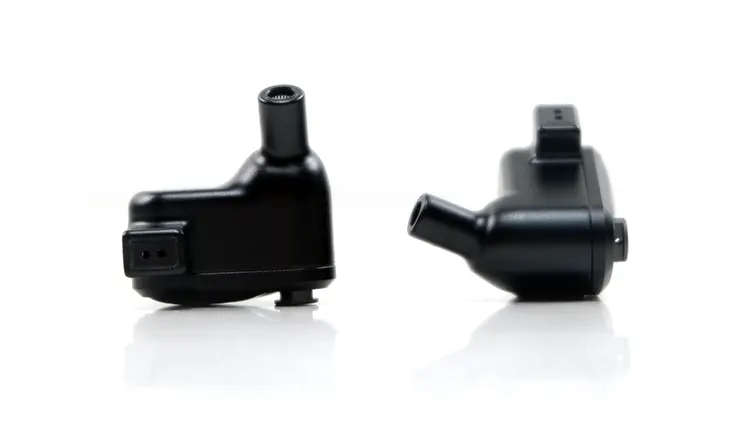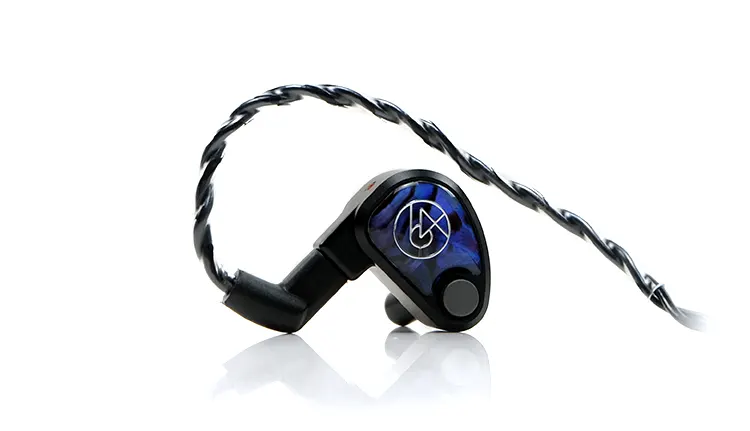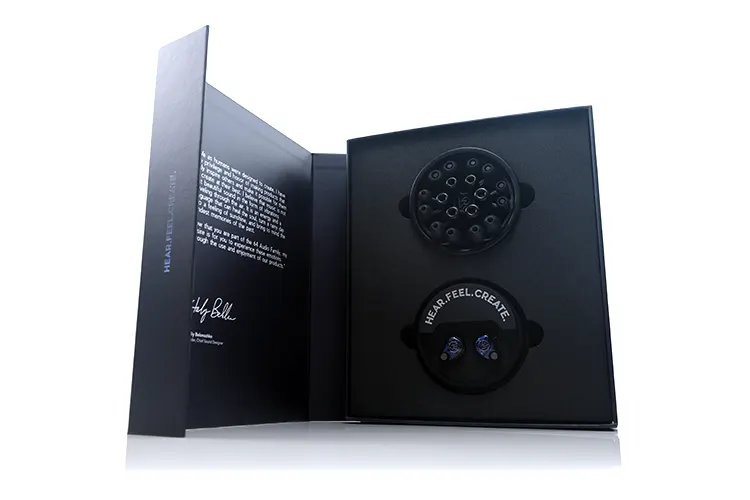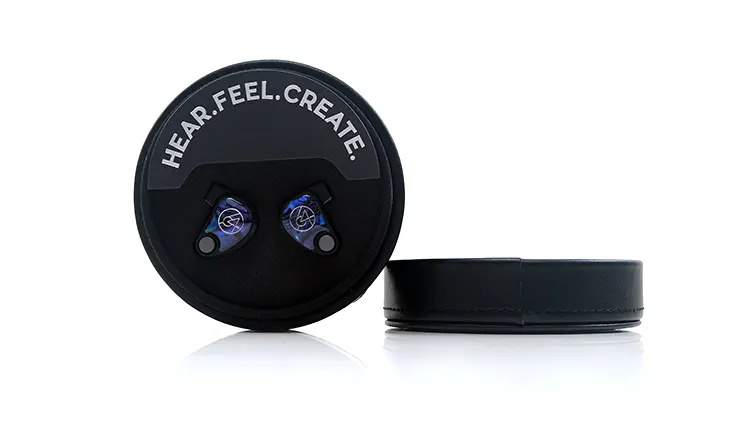We review the 64 Audio Volür, which is a new high-end hybrid IEM with a true isobaric dual 9mm dynamic driver and an 8 BA driver configuration. It is priced at $2499 SRP.
Disclaimer: The sample sent to us is a purchased unit and does not have to be returned. Headfonics is an independent website with no affiliate links or status. We thank 64 Audio for their support.
You can click here to learn more about 64 Audio products previously covered on Headfonics.
Note that this article follows our current scoring guidelines, which you can read in more detail here.
The 64 Audio Volür has just been released with a price point that places it ahead of one of my favorite IEMs, the Trio, but below the likes of the U18s and the long-standing top dog, the Fourté.
Building on the legacy of the popular hybrid Nio which was launched in 2020, the Volür aims to further refine the Nio’s noted low-end power as well as address potential owners’ want more clarity and sparkle through the mids and highs.
Currently, it is available in universal format only. Due to the compatibility of some of the new technology introduced there is unlikely to be an “A-series” custom version but there has been mention that some of the technology might trickle down to alternative custom formats further down the line.

Tech Highlights
Driver Configuration
The 64 Audio Volür is a hybrid 10-driver universal in-ear monitor but rather than simply tweaking the Nio formula the company has gone for an entirely new low-end dynamic driver design.
We now have two custom 9mm dynamic drivers with upgraded n54 magnets and more sensitive cones covering the lows instead of one. More than that, the precise configuration of that dual dynamic design is a true isobaric design with a cone-to-magnet configuration connected by an acoustically inert coupling chamber.
The Volür true isobaric configuration is straight out of the HiFi playbook with its cone-to-magnet configuration having one diaphragm sealed off and the other contributing sound pressure.
The goal here is to improve the power handling and sub-bass extension but at the same time improve the damping of the dual driver’s acoustical response to keep distortion to a minimum.
The rest of the frequency range is covered by balanced armature drivers including 64 Audio tia technology for the highs. The precise grouping is 6 BA for the mids, 1 BA for the mid-highs, and 1 tia high BA for highs using an integrated 4-way passive crossover.

tia Waveguide
It is not all about the lows of the Volür, the highs also had a bit of a ‘makeover’ with 64 Audio’s new tia waveguide technology. This is alongside their standard open BA and single bore tia high tweeter, (tubeless), which fits right into the nozzle of the Volür.
The tia Waveguide operates as a type of precision spacing enclosure with special diffusion windows to its front and sides and sites around the tia high tweeter itself. Ideally, it serves to magnify and further refine the presence of the frequency band covered by the tia high tweeter.
apex
The LID-equipped Volür comes fitted with 64 Audio’s apex system as standard with the -15 dB passive isolating m15 version fitted into the driver shells out of the box. You also get the silver -20dB m20 module, the newer gold-finished 12 dB m12 filter, and the least isolating -10 dB mX filter in black making 4 filters in total.
For those new to apex technology, the full name is Air Pressure Exchange and they are designed to vent air pressure during listening and potentially reduce listening fatigue and long-term hearing damage.
Each module has an opening at the top combined with multi-cell studio-grade TPE material inside that varies in size and composition to produce different audible and sound pressure effects. In short, you can control the level of isolation from the Volür fitting as well as the final sound signature.
Design
The Volür has lifted a page out of the Nio design program with its use of some gorgeous Abalone faceplates. However, this time we have a purple-blue tone rather than the sea green of the Nio equivalent.
Bear in mind that abalone is a naturally occurring New Zealand Pāua or sea snail shells so each one is very unique and no two plates on the Volür will look exactly the same.
Although the form factor is largely unchanged 64 Audio has made some underlying tweaks to the Volür housing to better complement that darker aesthetic. Gone are the silver ‘fenders’ of the Nio and the glossy shell finish and opted instead for a slimline chamfered frame on top of an anodized black CNC-machined aluminum shell.
You could say it is a bit closer in likeness to the U18s shell finish though a bit smaller and lighter than the higher-end model or virtually the same size as the Nio.
As always the cornering of the plate is finished with the apex filter system which is an easy pull and push connection system. Venting in unchanged from the Nio in terms of a red ring port placement at the rear of the shell.
Overall, the Volür has a very sleek and updated look, but also still very 64 Audio if you are familiar with their universal designs.
Comfort & Isolation
These universal form factor designs from 64 Audio always fit really well despite using an aluminum body and the Volür is no exception to this. It’s virtually the same size and shape as the Nio so if the older model fits you well then so also will the Volür.
The soft curves and small lightweight form factor barely touch the ear or press down in an uncomfortable fashion. The longer stems might also help keep the cable up and away from the sides of your ear where sometimes pressure from the cable can develop.
Because it is an apex-equipped hybrid model, there will be some leakage due to the rear venting port combined with the apex filter system which will also be a major factor in the level of passive isolation the Volür offers.
The stock m15 is normally my preferred option because the isolation is still very good but vents just enough to give you a good level of air in the mids and highs compared to the more powerful but more closed-in m20 model.
Of course, you can go right down to the mX apex filter for maximum perceived space and height in the presentation but with that comes the least amount of depth and passive isolation. The choice is really yours.
Tips
The provided tip selection is unchanged from recent models such as the U18s or the U4s with the inclusion of the ‘spider-web’ tip tray offering TrueFidelity foam and silicone in small, medium, and large.
The silicone options are split into two with a taller narrow bore SpinFit CP145s option with a stiffer stem and a shallower wide bore alternative with more flexible stems.
The foams will give you the most passive isolation, (in combination with the m20 filter), but do tend to put more pressure on the ear canal if properly fitted. I have tended to move away from foam tips over the last few years finding them less comfortable than silicone alternatives.
They also tend to attenuate the vibrancy of the mids and highs. I understand people like smooth and it could be right for you but I prefer a bit more contrast in my tuning which the silicone tips can offer.
The two silicone tips offer similar levels of passive isolation for my ears though the effects of both are quite different. The narrower teller silicone tip tends to emphasize a bit more bass with a rounded staging quality whereas the wide bore flattens it a bit more and introduces an airier midrange and treble performance.
Stock Cable
The Volür comes packaged with a 48″ 64 Audio Premium cable which retails separately for $199. This is a low-impedance cable, lower than the Premium 8-braid cable that comes with the U18s but it is only a 26AWG 4-wire silver-plated OCC copper as opposed to an 8-wire equivalent.
This is pretty much your standard cable for most of the current 64 Audio universal lineup from the Trio down to the U4s including the Fourté above it. Only the U18s uses the 8-wire Premium braid version.
Personally, I would have preferred to see the Volür come with the 8-wire version. Not just because of its price point but with the additional emphasis on clarity and control over the Nio, an 8-wire could give you a bit more lift in dynamic range to help achieve that.
Still, the Premium cable is a well-made and flexible cable with a low level of microphonics. It is terminated with a single-ended 3.5mm straight jack in a slimline branded black aluminum barrel with a matching low profile splitter and chin cinch by default.
The cable comes fitted with a 2-pin connector system, as do all 64 Audio universal IEMs with that angular connector barrel to help sweep the cable out and away from your ear curvature preventing additional pressure on your fitting.
Packaging & Accessories
The 64 Audio packaging formula that started around the launch of the U18s continues with the Volür retail presentation, subject to a few minor tweaks.
This is a fairly large but shallow lift-lid type box with professional design finishing on the outside cover, and a padded protective layering on the inside housing the drivers, case, and accessories. On the underside of the lid, you have a signature welcome message from the founder, Vitaliy.
Like the U18s, the layout is basically a heavily protected split of the leather carry case with the IEMs firmly inset into a display mount inside one half of the carry case and the spiderweb tray of tips in the other.
However, the tweak is in the strapline. Gone is the older “Handcrafted With Love” and instead we have their newer “Hear.Feel.Create” message that has been the backbone of their launches since the U6t.
Underneath the drivers, you have the rest of the accessories, including a cable, cleaning pick/brush, stickers, and a set of the 4 apex filters.
Carry Case
The Volür comes with 64 Audio’s ‘Premium Leather’ case which I have seen a few times now and it’s a family well-made puck-style design using high-quality simulation leather and black stitching. It is soft but strong on the outside with that distinctive 64 Audio logo embossed on the front.
The inside is fairly spacious with plenty of room to fit in a cable or two, the monitors, and even the spiderweb tips tray on top. The sides, top, and inside of the lid are padded with a cloth material so your monitors will not suffer from any undue knocks from day-to-day carrying.
It is marginally too big to be easily pocketable which smaller plastic containers or soft pouches could offer but it will have no issues being thrown into small bags on the go.


